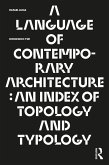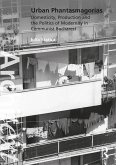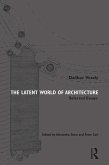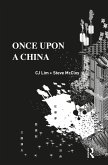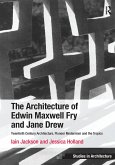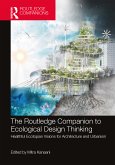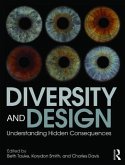- Broschiertes Buch
- Merkliste
- Auf die Merkliste
- Bewerten Bewerten
- Teilen
- Produkt teilen
- Produkterinnerung
- Produkterinnerung
Political Postmodernisms shows how postmodern architecture in the unlikely settings of Chile during the neoliberal dictatorship of Augusto Pinochet and Poland during the late socialist Polish Peopleà â â s Republic undermine an established narrative of architecture theory and history.
Andere Kunden interessierten sich auch für
![A Language of Contemporary Architecture A Language of Contemporary Architecture]() Rafael LunaA Language of Contemporary Architecture55,99 €
Rafael LunaA Language of Contemporary Architecture55,99 €![Urban Phantasmagorias Urban Phantasmagorias]() Iulia Statica (UK Cornell University)Urban Phantasmagorias57,99 €
Iulia Statica (UK Cornell University)Urban Phantasmagorias57,99 €![The Latent World of Architecture The Latent World of Architecture]() Dalibor VeselyThe Latent World of Architecture55,99 €
Dalibor VeselyThe Latent World of Architecture55,99 €![Once Upon a China Once Upon a China]() CJ LimOnce Upon a China28,99 €
CJ LimOnce Upon a China28,99 €![The Architecture of Edwin Maxwell Fry and Jane Drew The Architecture of Edwin Maxwell Fry and Jane Drew]() Iain JacksonThe Architecture of Edwin Maxwell Fry and Jane Drew53,99 €
Iain JacksonThe Architecture of Edwin Maxwell Fry and Jane Drew53,99 €![The Routledge Companion to Ecological Design Thinking The Routledge Companion to Ecological Design Thinking]() The Routledge Companion to Ecological Design Thinking48,99 €
The Routledge Companion to Ecological Design Thinking48,99 €![Diversity and Design Diversity and Design]() Diversity and Design81,99 €
Diversity and Design81,99 €-
-
-
Political Postmodernisms shows how postmodern architecture in the unlikely settings of Chile during the neoliberal dictatorship of Augusto Pinochet and Poland during the late socialist Polish Peopleà â â s Republic undermine an established narrative of architecture theory and history.
Hinweis: Dieser Artikel kann nur an eine deutsche Lieferadresse ausgeliefert werden.
Hinweis: Dieser Artikel kann nur an eine deutsche Lieferadresse ausgeliefert werden.
Produktdetails
- Produktdetails
- Architext
- Verlag: Taylor & Francis Ltd
- Seitenzahl: 152
- Erscheinungstermin: 31. März 2023
- Englisch
- Abmessung: 172mm x 246mm x 12mm
- Gewicht: 372g
- ISBN-13: 9781032016573
- ISBN-10: 1032016574
- Artikelnr.: 67261094
- Herstellerkennzeichnung
- Libri GmbH
- Europaallee 1
- 36244 Bad Hersfeld
- gpsr@libri.de
- Architext
- Verlag: Taylor & Francis Ltd
- Seitenzahl: 152
- Erscheinungstermin: 31. März 2023
- Englisch
- Abmessung: 172mm x 246mm x 12mm
- Gewicht: 372g
- ISBN-13: 9781032016573
- ISBN-10: 1032016574
- Artikelnr.: 67261094
- Herstellerkennzeichnung
- Libri GmbH
- Europaallee 1
- 36244 Bad Hersfeld
- gpsr@libri.de
Lidia Klein is an Assistant Professor in Architectural History at the School of Architecture, University of North Carolina - Charlotte, specializing in global contemporary architecture. She earned her first Ph.D. from the University of Warsaw in Poland in 2013 and her second from Duke University in 2018. Prior to joining UNCC in 2018, Klein was awarded a Fulbright Junior Advanced Research Grant to the AAHVS Department at Duke (2010-2011) and was a Visiting Assistant in Research at the Yale School of Architecture (2016). Her book projects include the single-author study Living Architectures: Biological Analogies in Architecture of the End of the 20th Century (Warsaw: Fundacja Kultury Miejsca, 2014, in Polish) and the edited books Transformation: Polish Art, Design and Architecture after 1989 (Warsaw: Fundacja Kultury Miejsca, 2017, in Polish) and Polish Postmodernism: Architecture and Urbanism (Warsaw: 40000 Malarzy, 2013, in Polish).
Acknowledgements Introduction The "Rise" and "Fall" of Postmodern Architecture and Urbanism The Apolitical Legacy as Culminating in Postmodern Revivalism Chilean and Polish Postmodernism Recent Scholarship on Postmodernism Outline 1. Postmodernism and the State in Pinochet's Chile 1.1. From Eduardo Frei Montalva and Salvador Allende to Augusto Pinochet: Transformations in Urban Space 1.2. Postmodern Architecture as Propaganda: Plaza de la Constitución and Congreso de Chile 2. Postmodernism Against the State Under Pinochet's Dictatorship 2.1. The Origins of CEDLA and Its Emergence in Santiago 2.2. CEDLA's Project for Santiago Poniente 2.3. Social Housing 2.4. Dissent and Compliance 2.5. Chile's Distinctive Postmodernism 3. Socialist Postmodernism in the Polish People's Republic 3.1. Postmodern Architecture and Propaganda in the Polish People's Republic 3.2. Architektura 3.3. Na Skarpie Estate (Centrum E) 4. Postmodernism and Dissent in Socialist Poland 4.1. Oppositional Postmodernism: Czes
aw Bielecki and the DiM Group 4.2 Reforming the System from Within: Marek Budzy
ski and the Legacy of Socialist Realism 4.3. North Ursynów: City, Church, and Continuity 4.4. Poland's Distinctive Postmodernism Conclusion: Postmodernism as a Political Form Appendix: Interviews Humberto Eliash, August 23, 2016 Pedro Murtinho, August 30, 2016 Pedro Murtinho, September 1, 2016 Pilar Garcia, September 1, 2016 Cristián Boza, September 5, 2016 Fernando Pérez Oyarzún, September 6, 2016 Humberto Eliash, September 7, 2016 Fernando Pérez Oyarzún, September 12, 2016 Marta Le
niakowska, June 5, 2017 Czes
aw Bielecki, June 9, 2017 Romuald Loegler, July 1, 2017 Wojciech Szymborski & Ludwika Borawska Szymborska, July 26, 2021 Bibliography
aw Bielecki and the DiM Group 4.2 Reforming the System from Within: Marek Budzy
ski and the Legacy of Socialist Realism 4.3. North Ursynów: City, Church, and Continuity 4.4. Poland's Distinctive Postmodernism Conclusion: Postmodernism as a Political Form Appendix: Interviews Humberto Eliash, August 23, 2016 Pedro Murtinho, August 30, 2016 Pedro Murtinho, September 1, 2016 Pilar Garcia, September 1, 2016 Cristián Boza, September 5, 2016 Fernando Pérez Oyarzún, September 6, 2016 Humberto Eliash, September 7, 2016 Fernando Pérez Oyarzún, September 12, 2016 Marta Le
niakowska, June 5, 2017 Czes
aw Bielecki, June 9, 2017 Romuald Loegler, July 1, 2017 Wojciech Szymborski & Ludwika Borawska Szymborska, July 26, 2021 Bibliography
Acknowledgements Introduction The "Rise" and "Fall" of Postmodern Architecture and Urbanism The Apolitical Legacy as Culminating in Postmodern Revivalism Chilean and Polish Postmodernism Recent Scholarship on Postmodernism Outline 1. Postmodernism and the State in Pinochet's Chile 1.1. From Eduardo Frei Montalva and Salvador Allende to Augusto Pinochet: Transformations in Urban Space 1.2. Postmodern Architecture as Propaganda: Plaza de la Constitución and Congreso de Chile 2. Postmodernism Against the State Under Pinochet's Dictatorship 2.1. The Origins of CEDLA and Its Emergence in Santiago 2.2. CEDLA's Project for Santiago Poniente 2.3. Social Housing 2.4. Dissent and Compliance 2.5. Chile's Distinctive Postmodernism 3. Socialist Postmodernism in the Polish People's Republic 3.1. Postmodern Architecture and Propaganda in the Polish People's Republic 3.2. Architektura 3.3. Na Skarpie Estate (Centrum E) 4. Postmodernism and Dissent in Socialist Poland 4.1. Oppositional Postmodernism: Czes
aw Bielecki and the DiM Group 4.2 Reforming the System from Within: Marek Budzy
ski and the Legacy of Socialist Realism 4.3. North Ursynów: City, Church, and Continuity 4.4. Poland's Distinctive Postmodernism Conclusion: Postmodernism as a Political Form Appendix: Interviews Humberto Eliash, August 23, 2016 Pedro Murtinho, August 30, 2016 Pedro Murtinho, September 1, 2016 Pilar Garcia, September 1, 2016 Cristián Boza, September 5, 2016 Fernando Pérez Oyarzún, September 6, 2016 Humberto Eliash, September 7, 2016 Fernando Pérez Oyarzún, September 12, 2016 Marta Le
niakowska, June 5, 2017 Czes
aw Bielecki, June 9, 2017 Romuald Loegler, July 1, 2017 Wojciech Szymborski & Ludwika Borawska Szymborska, July 26, 2021 Bibliography
aw Bielecki and the DiM Group 4.2 Reforming the System from Within: Marek Budzy
ski and the Legacy of Socialist Realism 4.3. North Ursynów: City, Church, and Continuity 4.4. Poland's Distinctive Postmodernism Conclusion: Postmodernism as a Political Form Appendix: Interviews Humberto Eliash, August 23, 2016 Pedro Murtinho, August 30, 2016 Pedro Murtinho, September 1, 2016 Pilar Garcia, September 1, 2016 Cristián Boza, September 5, 2016 Fernando Pérez Oyarzún, September 6, 2016 Humberto Eliash, September 7, 2016 Fernando Pérez Oyarzún, September 12, 2016 Marta Le
niakowska, June 5, 2017 Czes
aw Bielecki, June 9, 2017 Romuald Loegler, July 1, 2017 Wojciech Szymborski & Ludwika Borawska Szymborska, July 26, 2021 Bibliography


